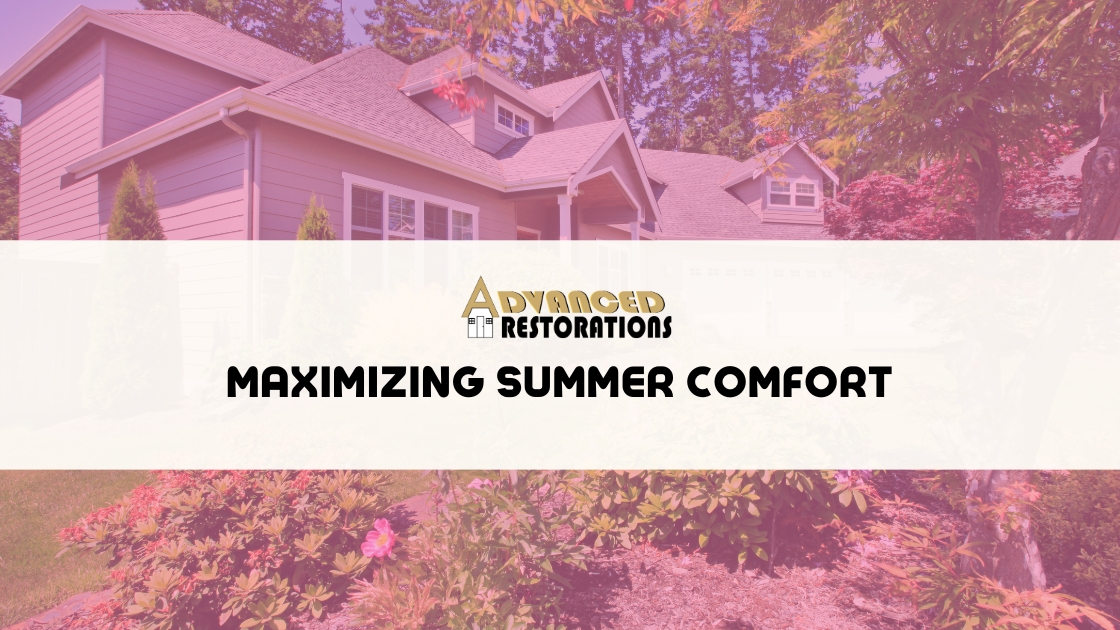
Maximizing Summer Comfort: How Proper Ventilation and Insulation Work Together
As the summer heat rises, homeowners are often faced with the challenge of keeping their homes cool and comfortable without racking up high energy bills. While air conditioning is the go-to solution for many, there’s a more efficient and cost-effective way to ensure your home stays cool: proper attic insulation and ventilation. Together, these two systems form a dynamic duo that plays a critical role in reducing indoor temperatures and lowering cooling costs during the hot summer months.
In this article, we’ll explain how the synergy between good ventilation and effective insulation can maximize your home’s comfort and help you save money on cooling expenses.
The Role of Insulation in Summer Comfort
Insulation is often thought of as a winter solution, but it’s equally important in the summer. Proper insulation helps maintain a stable indoor temperature by preventing heat from entering your home. This is especially true for attic insulation, which acts as a barrier between the hot air outside and the cool air inside.
Blown-in insulation is one of the most effective types of insulation for attics because it fills gaps and voids that traditional batt insulation might miss. This ensures that your attic is properly sealed, preventing the heat from entering your living spaces. As a result, your air conditioning system doesn’t have to work as hard to cool the home, leading to lower energy bills and a more comfortable environment. Proper attic insulation can reduce the amount of heat entering the house by up to 50% or more, depending on the quality of the insulation and your home’s specific needs.
The Role of Ventilation in Summer Comfort
While insulation blocks heat from entering your home, ventilation ensures that the hot air that does accumulate in your attic is able to escape. Without proper ventilation, the attic can become a heat trap, raising the overall temperature in your home. This forces your air conditioning system to work harder, leading to higher energy consumption and increasing the risk of roof damage from prolonged exposure to excessive heat.
Roof vents and soffit vents work together to create a balanced airflow in the attic. The ridge vents at the peak of your roof allow hot air to escape, while soffit vents near the eaves allow cooler air to enter. This continuous airflow helps to maintain a balanced temperature in the attic, preventing heat buildup and keeping the living spaces below cool.
The Synergy Between Insulation and Ventilation
When attic insulation and ventilation work together, they create an efficient system that keeps your home cooler during the summer and reduces the need for excessive air conditioning. Here’s how these two systems complement each other:
- Insulation prevents heat from entering the home in the first place, while ventilation ensures that any heat that does get trapped in the attic is properly expelled.
- Blown-in insulation seals gaps and keeps the attic cool, while proper roof and soffit vents allow for the natural flow of air, creating a more efficient cooling system overall.
Together, they help maintain a consistent indoor temperature, which means your air conditioning system doesn’t need to run as often or as hard, leading to significant energy savings.
Benefits of Proper Insulation and Ventilation
Having both proper insulation and adequate ventilation in your attic offers several benefits:
- Reduced Cooling Costs: By preventing heat from entering your home and ensuring that the attic remains cool, these systems reduce the workload on your air conditioning system, leading to lower cooling costs.
- Increased Home Comfort: Maintaining a stable, comfortable indoor temperature without drastic fluctuations can make your living environment more enjoyable during the summer months.
- Improved Roof Longevity: Proper ventilation helps prevent heat buildup, which can degrade roofing materials, shingles, and insulation over time. By ensuring your attic is well-ventilated, you can extend the lifespan of your roof and avoid costly repairs.
- Better Air Quality: Proper ventilation also helps remove moisture that can lead to mold and mildew growth. A well-ventilated attic reduces humidity levels, contributing to better indoor air quality.
Signs You Need to Improve Your Insulation and Ventilation
If your home is struggling to stay cool in the summer, or if your energy bills are higher than usual, it might be a sign that your attic insulation and ventilation need attention. Here are some warning signs to look out for:
- High energy bills: If your cooling costs are increasing despite using your air conditioning as usual, it could indicate that your insulation is insufficient or your attic is not properly ventilated.
- Hot rooms or floors: If certain areas of your home are consistently warmer than others, this could be a sign of poor attic insulation or airflow issues.
- Moisture or mold in the attic: If you notice moisture, mold, or musty smells in your attic, it’s a sign that your ventilation system is not allowing enough airflow to regulate humidity levels.
Ensure Your Home’s Comfort with Proper Insulation and Ventilation
Maximizing summer comfort is all about ensuring that your attic insulation and ventilation work together to create an efficient and effective system. By investing in quality insulation and ensuring your attic is properly ventilated, you can keep your home cooler, reduce your energy costs, and extend the life of your roof and HVAC system.
If you’re concerned about the efficiency of your attic insulation or ventilation system, or if you’re unsure whether your roof vents are functioning properly, schedule a consultation with Advanced Restorations today. Our experts can inspect your attic insulation and ventilation systems to ensure they’re working in harmony to keep your home comfortable and energy-efficient all summer long.
